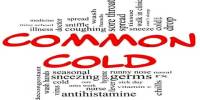Researchers discovered that more than a quarter of study participants contaminated salad with raw poultry, many of whom did not wash the poultry, in a study intended to evaluate the effect of washing poultry on kitchen contamination.
In order to lower the risk of contracting a foodborne illness while preparing meals at home, the study emphasizes the significance of washing hands and cleaning and sterilizing the kitchen. Due of worries about unintentionally contaminating other foods and surfaces and raising the risk of foodborne illness, washing raw poultry is not advised.
“We wanted to know what effect an educational intervention would have on getting people to stop washing poultry before cooking, and what effect any resulting change in behavior might have on reducing contamination in the kitchen,” says Ellen Shumaker, corresponding author of the study and an extension associate at North Carolina State University.
“We also wanted to get a better idea of how, if at all, washing poultry actually led to increased contamination in the kitchen.”
300 home cooks who claimed to wash their poultry before cooking it were gathered by researchers for the study. 142 study participants received emails from the researchers detailing risk-reduction strategies, including the advice to avoid washing raw poultry when preparing food. The education intervention was not provided to the remaining 158 trial participants.
We think the salad contamination stems from people doing a poor job of washing their hands after handling the raw chicken, and/or doing a poor job of sanitizing the sink and surrounding surfaces before rinsing or handling the salad.
Ellen Shumaker
The 300 study participants were then given the opportunity to prepare meals in test kitchens using video cameras. The task required the participants to boil chicken thighs and make a salad.
Participants were summoned from the kitchen to take part in a quick interview after preparing the chicken thighs but before the chicken was placed in the oven. After that, participants were sent back into the kitchen to make the salad, cook the chicken thighs, and clean the space as they would at home.
The chicken thighs were injected with a bacteria strain that the researchers could detect, but the study participants were unaware of this. This made it possible for researchers to swab kitchen surfaces to check for cross-contamination that might have happened during the food preparation and cooking process.
Researchers swabbed the kitchen to check for any potential contamination after study participants left to perform the interview. Once everyone had finished cooking and cleaning up the kitchen, the process was repeated. To check for potential contamination, the prepared salad was also analyzed.
Ninety-three percent of participants who got the intervention, as opposed to 39% of participants who did not, did not wash the chicken.
The researchers were taken aback to learn that the contamination levels from the raw chicken in the prepared salads were comparable between those who did and did not wash the chicken.
So what gives?
“We think the salad contamination stems from people doing a poor job of washing their hands after handling the raw chicken, and/or doing a poor job of sanitizing the sink and surrounding surfaces before rinsing or handling the salad,” Shumaker says.
“Regardless of whether people washed their chicken, the kitchen sinks became contaminated by the raw chicken, while there was relatively little contamination of nearby counters,” Shumaker says.
“This was a little surprising, since the conventional wisdom had been that the risk associated with washing chicken was because water would splash off of the chicken and contaminate surrounding surfaces. Instead, the sink itself was becoming contaminated, even when the chicken wasn’t being washed.”
Although washing the chicken is still not recommended, this study shows the necessity to concentrate on minimizing sink contamination and highlighting the need of hand washing, cleaning, and sanitizing surfaces.
The work was done with support from FSIS.
















